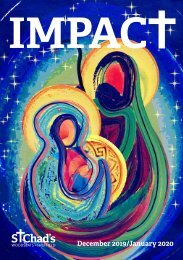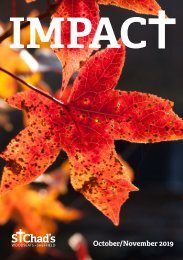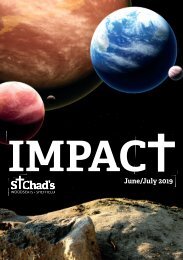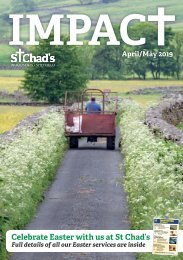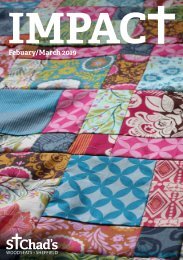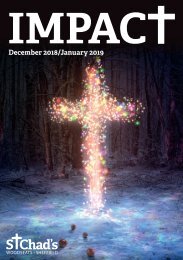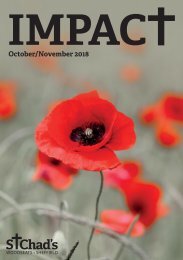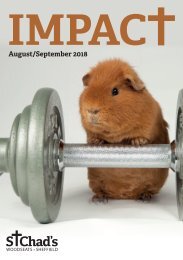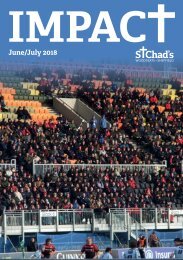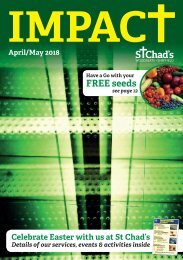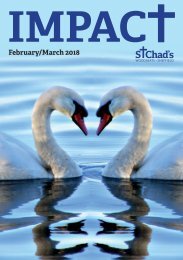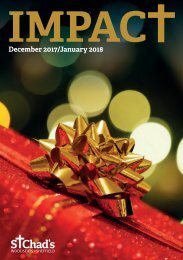Create successful ePaper yourself
Turn your PDF publications into a flip-book with our unique Google optimized e-Paper software.
Banking on the Future<br />
Have you ever visited<br />
the garden centre and<br />
been spoilt for choice,<br />
spending endless time<br />
trying to decide on which<br />
variety of what to buy?<br />
But what about the number<br />
and varieties of plants and fruits<br />
that were around when you were<br />
growing up but we no longer see?<br />
This could just be that the kind<br />
of apple we ate at home 20, 40<br />
or 80 years ago is not stocked by<br />
our multi-national superstores - or<br />
it could be that it no longer exists.<br />
Today, 60,000 to 100,000<br />
species of plant are faced<br />
with the threat of extinction.<br />
The Millennium Seed Bank<br />
Partnership - coordinated by the<br />
Royal Botanic Gardens in Kew -<br />
is the largest plant conservation<br />
programme in the world. It looks<br />
at wild plants faced with the threat<br />
of extinction and those of most<br />
use for the future.<br />
The seeds saved are conserved<br />
in seed banks in case they<br />
become extinct in their native<br />
habitat.<br />
Working with a network of<br />
partners in 80 countries across<br />
the world, over 13 per cent of the<br />
planet’s wild plant species have<br />
been banked and the partnership<br />
is aiming to save a<br />
quarter of species with<br />
‘bankable’ seeds by<br />
2020 - a total of 75,000<br />
species. The team<br />
initially aimed to store<br />
seeds from all of the<br />
UK’s native plant species<br />
and it has now achieved<br />
this, apart from a handful<br />
of species that are either<br />
very rare or whose<br />
seeds are particularly<br />
difficult to store.<br />
The Seed Bank Partnership<br />
targets plants and regions most<br />
at risk from the impact of human<br />
activities, including land use and<br />
climate change.<br />
Seeds are collected by Kew’s<br />
partner organisations around the<br />
world and preserved by careful<br />
drying before being stored in large<br />
underground frozen vaults in<br />
temperatures of -20 deg c.<br />
Where possible, collections<br />
of seeds are duplicated in seed<br />
banks in the country where they<br />
were collected.<br />
The idea is that they are given<br />
a ‘best before’ or expiry date –<br />
some in a few decades, others for<br />
over 1,000 years – and are then<br />
planted and geminated before this<br />
date arrives.<br />
The new seeds are then taken<br />
from the plant and re-stored. If<br />
the species becomes or nears<br />
extinction, the seeds are used to<br />
repopulate the wild.<br />
A spokesman for the partnership<br />
said: “Each day the world’s plants<br />
are more and more at risk. If we<br />
continue on our current path, we<br />
will lose one species a day for the<br />
next 50 years.<br />
“We can’t afford to let these<br />
plants, and the potential they<br />
hold, die out.”<br />
Photo courtesy of RBG Kew<br />
A Milennium Seed Bank scientist at work<br />
St Chad’s Church, Linden Avenue, Woodseats<br />
Church Office: 9 Linden Avenue, Sheffield S8 0GA<br />
Tel: (0114) 274 5<strong>08</strong>6<br />
Page 10<br />
email: office@stchads.org<br />
website: www.stchads.org






